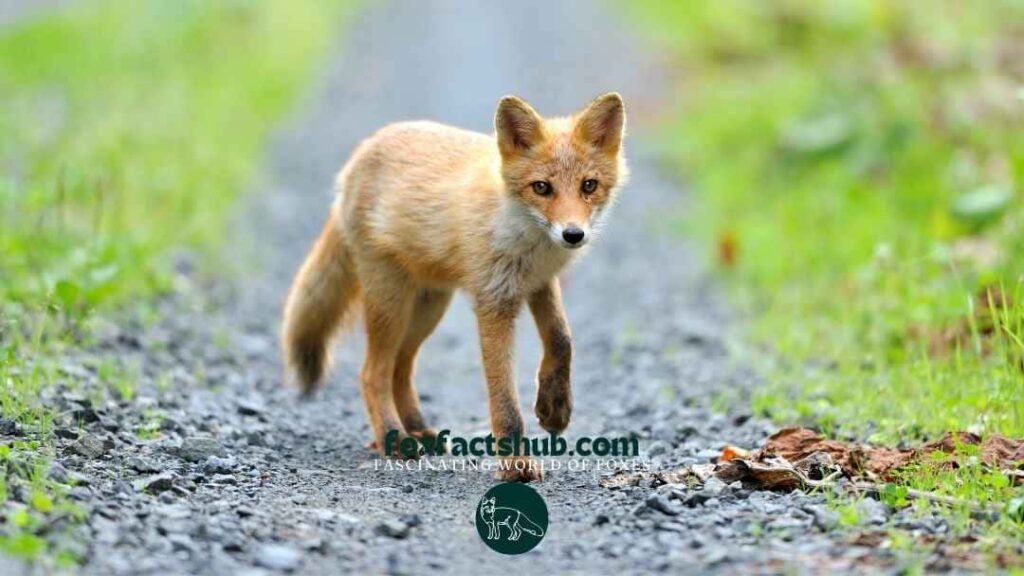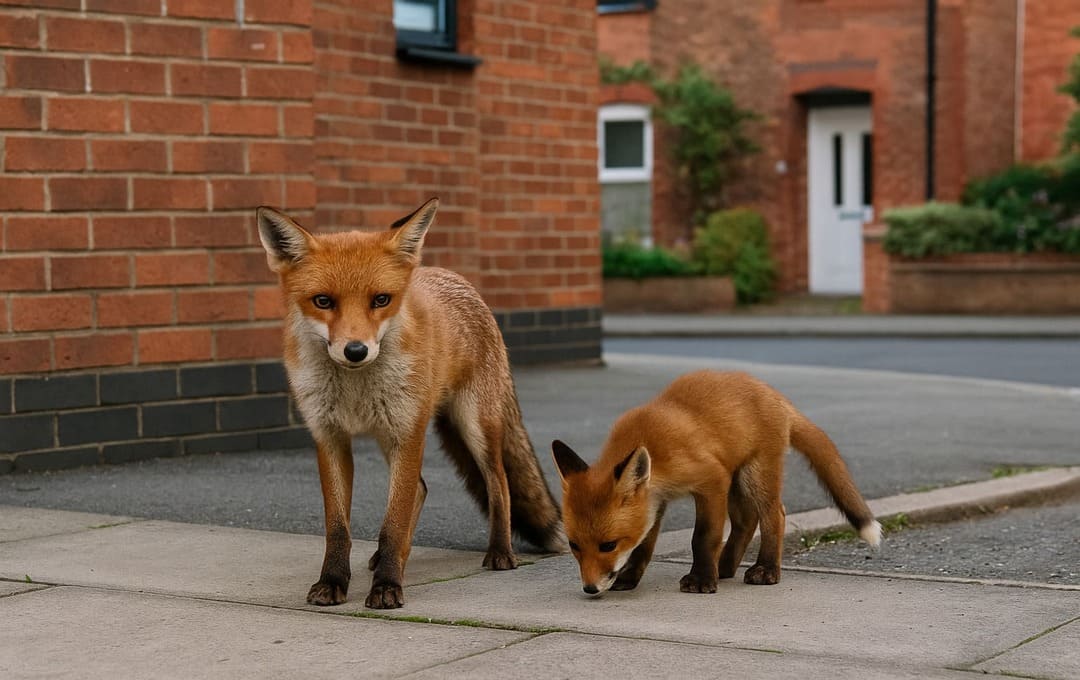Over the past few years, urban foxes have become a familiar sight in neighborhoods and city parks. As more people come across these clever animals, it’s natural to ask, Are urban foxes dangerous?
Many wonder if these wild animals pose a threat to humans, pets, or property, and how we can safely live alongside them.
Understanding their behavior, risks, and habits is vital, and the first step to peaceful coexistence, especially if you have pets at home. For instance, you might want to consider if your pet cat could be at risk.
Let us shed light on the dynamics of urban foxes and the safety of you and your furry companions.
Key Takeaways on Whether Urban Foxes Are Dangerous to Humans and Pets:
- Urban foxes generally pose minimal danger to humans, often avoiding direct contact and displaying timid behavior around people.
- While attacks on pets are rare, smaller animals may be at risk, especially if they are left unattended in gardens or areas where foxes roam.
- Proper waste management and securing garbage can deter foxes from frequenting residential areas, reducing potential encounters.
Understanding Urban Fox Behavior
Your understanding of urban fox behavior is imperative for navigating encounters with these adaptable creatures.
Urban foxes have adapted remarkably well to city life, exhibiting unique behaviors influenced by their environment. By observing their routines and habits, you can better appreciate how they coexist with humans and the impact they may have on your surroundings.
Feeding Habits
At night, urban foxes are primarily scavengers, feeding on food scraps, pet food, and even small rodents. They have a diverse diet that allows them to thrive in urban settings, often foraging in gardens or rubbish bins.
By understanding their feeding habits, you can take steps to minimize attractants around your home.
Habitat Preferences
Behind their adaptability lies a preference for habitats that offer shelter and easy access to food. Urban foxes tend to favor green spaces, parks, and gardens where they can find cover while hunting.
These areas not only provide food sources but also suitable dens, often found in undergrowth or abandoned structures.
Another important factor influencing habitat preferences is the presence of humans. Urban foxes often thrive near residential areas, where they can easily scavenge leftovers. They particularly enjoy locations with minimal disturbance and good access to both food and hiding spots.
Consequently, your careful management of waste and outdoor pet food can contribute to reducing fox visits and maintaining a safe environment for your pets.
Interaction with Humans
While urban foxes generally avoid humans, interactions can occur, especially if they become habituated to human presence.
You may spot them rummaging through garbage bins or wandering in parks. In most cases, they are simply looking for food or shelter.
However, it’s important to maintain a safe distance, as any wild animal can become defensive if they feel threatened, despite their typically shy nature.

Common Myths
Below are some myths regarding urban foxes that may lead to misunderstandings. Many people believe that foxes pose an immediate threat to humans and pets, but this is often exaggerated.
While they can display aggressive behavior if cornered, most encounters result in little more than a fleeting glance as they dash away.
Actual Risks
Beside their fearsome reputation, urban foxes carry minimal actual risks to humans and pets. They are mostly scavengers and prefer to avoid confrontation.
However, it is important to monitor your pets, especially smaller animals, when outdoors, as foxes may see them as potential prey.
In addition, the threats posed by urban foxes are primarily linked to the transmission of diseases, such as mange or parasites like fleas and ticks. They may also scavenge from bins that contain food scraps, posing a risk of attracting larger predators to your neighborhood.
By taking precautions, such as securing your waste and supervising your pets, you can mitigate any potential risks.
Overall, understanding fox behavior helps you coexist peacefully with these urban dwellers.
Impact on Domestic Pets
Now, it’s necessary to consider how urban foxes may impact your domestic pets. While foxes are generally more interested in scavenging for food than attacking pets, encounters can still result in stress or injury.
Understanding potential threats helps you take appropriate measures to ensure your pets remain safe while enjoying outdoor spaces.
Potential Threats to Cats
On occasion, your outdoor cat may become a target for an urban fox. These animals can pose a threat due to their hunting instincts; they may see smaller cats as prey. Keeping your cat indoors, particularly during dusk and dawn when foxes are most active, can help protect them from potential harm.
Potential Threats to Dogs
By understanding the dynamics between your dog and urban foxes, you can take steps to mitigate risks.
Although foxes pose less of a direct threat to larger dogs, territorial or aggressive behavior in foxes can lead to confrontations.
Always keep a close watch on your dog during outdoor activities, particularly in areas known for fox presence.
Threats to your dog from urban foxes can occur, especially if they feel threatened or cornered. Small and medium-sized dogs are particularly vulnerable to aggressive encounters, especially if they provoke a fox during play.
When walking your dog, keep them on a leash, and be aware of your surroundings to avoid any unpleasant encounters with urban wildlife.
Measures for Coexistence
Once again, finding ways to coexist with urban foxes can lead to a safer and more harmonious environment for both you and the wildlife around you.
By implementing simple strategies, you can minimize potential conflicts while appreciating the benefits of these fascinating creatures.
This approach involves understanding their behavior, securing your living space, and ensuring your pets are safe, thus fostering a coexistence that respects both human and animal needs.

Preventing Encounters
Preventing encounters with urban foxes starts with minimizing attractants around your home. Make sure to securely store garbage in wildlife-proof bins, avoid leaving pet food outside, and clean up any fallen fruits from your garden.
By reducing food sources and shelter options, you can discourage foxes from wandering into your vicinity, creating a safer environment for your household.
Responsible Pet Ownership
Ownership of pets near urban wildlife requires diligence and an understanding of their interactions with foxes.
Protecting your pets involves ensuring they are leashed during walks, supervised while outdoors, and kept indoors during dusk and dawn when fox activity is at its peak.
By taking these steps, you can help safeguard your furry companions from potential conflicts with urban foxes, promoting a healthy balance between your pets and the local wildlife.
It is vital to recognize that your responsibility as a pet owner extends beyond the immediate care of your animals.
Understanding the local ecosystem can help you make informed decisions about pet management, thereby reducing potential conflicts with urban foxes.
Consider spaying or neutering your pets and ensuring they do not attract foxes with unsupervised outdoor access or uncontained habitats.
These actions not only protect your pets but also contribute to a more sustainable coexistence with wildlife in your community.
Urban Fox Population Trends
After years of growth in urban areas, the urban fox population has been steadily increasing. This surge is particularly noticeable in cities, for example, across the United Kingdom and many other urban environments all over the world, where these adaptable creatures have found an abundance of food resources and shelter.
The presence of foxes in urban environments has become a common sight, leading to discussions about their impact on local communities and ecosystems.
Factors Influencing Growth
At the core of the urban fox population growth are several key factors:
- Availability of food sources, such as waste and pet food.
- Urban environments provide safe breeding habitats.
- Reduction in natural predators, leading to lower mortality rates.
The combination of these factors creates a thriving environment for foxes.
Environmental Impact
Environmental considerations play a significant role in the dynamics of urban fox populations. These animals can influence local ecosystems through predation and competition with native species.
Hence, the presence of urban foxes has multifaceted implications, impacting the balance of local wildlife.
For instance, as foxes prey on small mammals and birds, they can alter the population dynamics of these species, potentially leading to declines in certain populations.
Additionally, their scavenging habits can affect waste management practices in urban settings. Understanding these impacts helps you appreciate the complexities of coexistence with urban foxes.
Case Studies and Reports
Not every interaction with urban foxes results in danger, but certain case studies reflect a need for awareness.
Here’s a detailed list of incidents:
- In a 2019 study of London, researchers reported that over 200 fox attacks on pets occurred, highlighting urban aggression.
- Data from the RSPCA indicated a 15% increase in calls related to foxes between 2018 and 2020.
- A survey conducted in 2021 found that 30% of pet owners in urban neighborhoods had experienced a fox encounter.
Incidents in Urban Areas
Above all, urban areas present a unique dynamic where urban foxes may approach houses and yards more frequently. Reports of fox encounters vary from harmless sightings to more serious confrontations, particularly concerning pets.
Residents often share these incidents, fueling discussions about managing wildlife in populated spaces.
Community Responses
With increasing sightings and occasional attacks, your community may engage in various responses to address the situation. Public meetings, educational campaigns, and local regulations are common strategies aimed at mitigating risks associated with urban foxes.
At these community engagements, discussions can revolve around coexistence strategies, such as securing trash cans, supervising pets during walks, and educating residents on how to respond safely to fox encounters.
Your involvement in these initiatives helps foster a sense of safety within your neighborhood while balancing the ecological role of urban wildlife.
Final Words
Ultimately, understanding the behavior and habits of urban foxes can help you navigate potential interactions with these animals. While urban foxes generally pose a low risk to humans and pets, it’s important to maintain a respectful distance and avoid feeding them. By taking proper precautions, you can ensure the safety of your loved ones while coexisting peacefully with these fascinating creatures in your neighborhood.
FAQ
Are urban foxes aggressive towards humans?
- Urban foxes are generally not aggressive towards humans. They are typically shy and will avoid human interaction. However, if they feel threatened or cornered, they may exhibit defensive behavior. It’s vital to give them space and avoid approaching or feeding them to prevent any potential issues.
Can urban foxes pose a threat to pets?
- While urban foxes are primarily scavengers and tend to avoid larger pets, they can pose a risk to small animals, especially if they feel hungry or are raising young kits. Small dogs and cats, particularly those that are left outside unsupervised, may attract unwanted attention from foxes. It’s important to supervise pets outdoors and avoid leaving food out that might attract foxes.
How can I deter urban foxes from my backyard?
- There are several ways to deter urban foxes from your property. You can secure trash bins, remove any pet food from outside, and keep gardens tidy to eliminate potential food sources. Installing fences that are at least six feet high and extending below ground can help keep foxes out. Additionally, using noise-making devices or motion-activated sprinklers can be effective deterrents.
Are urban foxes a risk for carrying diseases?
- Like many wild animals, urban foxes can carry diseases, such as mange, rabies, and leptospirosis, but the risk of transmission to humans is low. Maintaining distance and avoiding interaction with foxes helps reduce any potential health risk. If you encounter a fox that appears ill or aggressive, it’s best to report it to local wildlife authorities.
What should I do if I encounter an urban fox?
- If you encounter an urban fox, it’s best to stay calm and avoid making direct eye contact. Slowly back away to give the fox space and allow it to leave the area. Do not approach or try to capture the fox, as this might provoke a defensive response. If the fox seems unwell or poses a consistent threat, contacting local wildlife control can provide further guidance.


